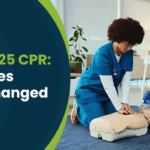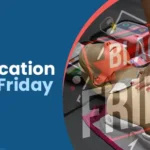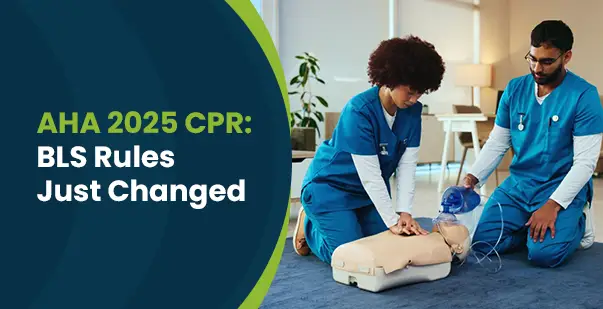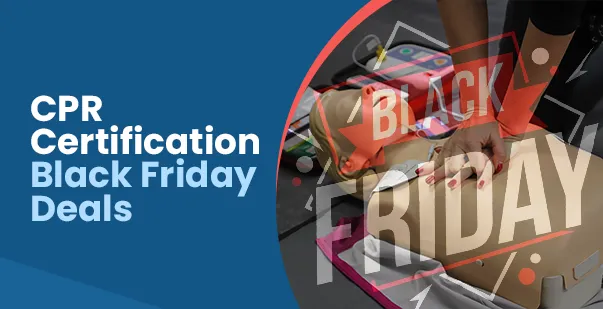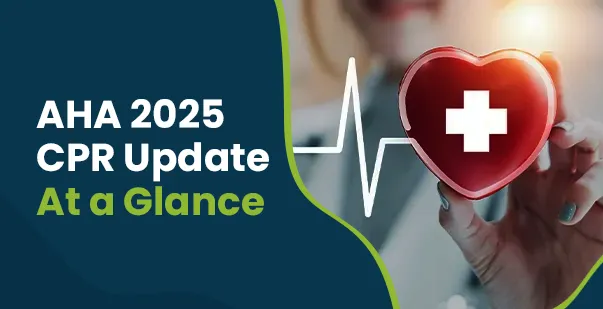From minor cuts in the kitchen to deep wounds while playing sports, bleeding can occur at any time. Knowing how to stop bleeding is a critical skill that makes a significant impact in emergencies. Blood loss or failure to stop bleeding is the reason for about 40% of trauma deaths. Whether you are a parent, student or a working individual, acquiring the skills to stop bleeding is essential for understanding the intricacies of wound care.
During an emergency, involving blood loss, bystanders often start panicking. From minor abrasions to deep wounds, it is important to manage such scenarios with calmness and precision. In this blog, we will walk you through the important first aid techniques to stop bleeding. By the end of this guide, you will have the confidence to handle bleeding emergencies keeping in mind the best possible outcome for the injured person.
Types of Bleeding: Understanding the Difference
Before treating any sorts of bleeding, it is important to understand the differences between each. With better clarity, you will be able to deliver the best care. Here’s a quick overview of the different types:
- Arterial Bleeding:
- Bright red and spurting.
- Most severe type due to high pressure.
- Requires immediate medical attention.
- Venous Bleeding:
- Dark red or maroon in color.
- Flows steadily but less rapidly than arterial bleeding.
- Typically easier to control than arterial bleeding.
- Capillary Bleeding:
- Oozing of blood from the tissues.
- Most common type, often seen in minor cuts and scrapes.
- Generally stops on its own or with basic first aid measures.
What is the first aid for minor cuts?
Minor cuts are common injuries that can happen in everyday situations. Accidents can happen when preparing for a meal, handling sharp objects or playing games. Minor cuts are not life threatening but immediate first aid ensures timely healing and infection prevention. Here are the steps to treat minor cuts with first aid:
- Wash Your Hands: Before touching the wound, make sure your hands are clean to prevent infection.
- Stop the Bleeding: Apply gentle pressure with a clean cloth or bandage until the bleeding stops, usually within a few minutes.
- Clean the Cut: Rinse the wound with clean water to remove any dirt or debris. Avoid using soap directly on the cut as it can cause irritation.
- Apply an Antibiotic Ointment: After cleaning, apply a thin layer of antibiotic ointment to prevent infection and keep the wound moist.
- Cover the Cut: Use a sterile ban or adhesive strip to cover the wound. Change the bandage daily or whenever it gets wet or dirty.
- Monitor for Infection: Keep an eye on the cut for signs of infection, such as redness, swelling, warmth, or pus. If any of these symptoms occur, seek medical attention.
- Keep It Clean and Dry: Avoid soaking the cut in water for prolonged periods. Keep the wound clean and dry to promote faster healing.
How to control blood loss or stop bleeding after a severe accident?
Accidents can happen anytime and anywhere. Severe accidents can cause major blood loss if not immediately intervened. During such emergencies, it is important to be calm and decisive. Here are the essential steps to manage bleeding until professional help arrives:
- Call for Emergency Help: Dial emergency services immediately. Provide clear information about the location and nature of the accident.
- Ensure Safety: Before approaching the injured person, ensure the area is safe for both you and the victim.
- Use Personal Protective Equipment (PPE): If available, wear gloves to protect yourself and reduce the risk of infection.
- Apply Direct Pressure: Use a clean cloth, bandage, or even clothing to apply firm and steady pressure directly on the wound. Maintain pressure until help arrives.
- Elevate the Injured Limb: If possible, elevate the injured limb above the level of the heart to reduce blood flow to the area.
- Use a Tourniquet: If direct pressure and elevation do not control the bleeding, and if the injury is on a limb, apply a tourniquet above the wound. Tighten it until the bleeding stops. Note the time the tourniquet was applied and inform medical personnel upon their arrival.
- Keep the Victim Calm and Still: Encourage the injured person to stay still and calm to prevent further injury and reduce blood flow.
- Monitor for Shock: Look for signs of shock, such as pale skin, rapid breathing, or a weak pulse. Keep the person warm and lay them flat with their legs elevated if possible.
- Do Not Remove Embedded Objects: If there is an object embedded in the wound, do not attempt to remove it. Stabilize the object and control the bleeding around it.
Read More: CPR Compression Rate for Infants & Children
Why is Bloodborne Pathogens Training essential for anyone providing first aid in blood loss emergencies?
Before providing first aid in blood loss emergencies, it is important to ensure that both the victim and the responder are safe from bloodborne pathogens. Infections from pathogens like HIV, hepatitis B and C can pose serious health risks. Anyone who comes in contact with blood or bodily fluids, needs to be bloodborne pathogens trained and certified, to prevent further deterioration and health risks. We have highlighted a few points that will confirm why bloodborne pathogens training is crucial:
- Understanding Risks: Learn about the dangers associated with bloodborne pathogens and how they can be transmitted through blood and bodily fluids.
- Personal Protective Equipment (PPE) Usage: Gain knowledge on the proper use of gloves, masks, and other PPE to protect yourself from exposure.
- Proper Handling and Disposal: Get trained on how to safely handle and dispose of contaminated materials. This includes bandages and gloves, to prevent the spread of infection.
- Effective Cleaning Procedures: Learn the correct methods for cleaning and disinfecting surfaces and equipment that may have come into contact with blood.
- Emergency Response: Understand the immediate steps to take if exposure to bloodborne pathogens occurs. This includes reporting procedures and seeking medical evaluation.
- Legal and Regulatory Compliance: Ensure adherence to OSHA regulations and other relevant laws that mandate bloodborne pathogens training for workplace safety.
- Building Confidence: Enhance your confidence and preparedness to handle blood loss emergencies safely and effectively. This will help protect both yourself and the injured person.
How can a first aid training help manage accidents causing blood loss?
Proper first aid training equips with the knowledge to respond decisively and promptly in emergencies relating blood loss. A first aid training course can help you master the skills to manage an alarming situation by saving lives and preventing potential harm. Below are the points that will help you determine clearly why a first aid training course stands crucial:
- Immediate Response: Trained individuals can quickly assess the situation and respond appropriately. This reduces panic and ensures swift action to control bleeding.
- Knowledge of Techniques: First aid training provides detailed instruction on various techniques to stop bleeding, such as applying direct pressure, using bandages, and elevating injured limbs.
- Use of Tourniquets: Training includes when and how to correctly apply a tourniquet, which can be crucial in stopping severe bleeding from limb injuries.
- Recognition of Severity: Trained responders can accurately determine the severity of the injury and take appropriate measures, from managing minor cuts to addressing major wounds.
- Prevention of Infection: Understanding how to clean and dress wounds properly helps prevent infections. Insufficient knowledge can complicate recovery and lead to more severe health issues.
- Personal Safety: First aid training emphasizes the importance of personal protective equipment (PPE) to protect the responder from bloodborne pathogens and other infectious diseases.
- Communication with Emergency Services: Trained individuals can effectively communicate the situation to emergency services, providing vital information that can speed up professional medical assistance.
- Psychological Support: First aid training includes techniques for calming and reassuring the injured person. This reduces stress and prevents shock.
- Building Confidence: Confidence built through training helps individuals act decisively and effectively in emergencies, impacting the chances of positive outcomes.
First Aid for Bleeding in Children and Infants
Bleeding in children and infants can be distressing for both the child and the caregiver. Due to their smaller size and developing bodies, managing bleeding in young children requires special considerations and gentle care. Here’s how to approach first aid for bleeding incidents involving children and infants:
- Stay Calm and Reassure: Children may become frightened or anxious when they see blood. Stay calm to reassure them and keep them as calm as possible.
- Apply Direct Pressure: Use a clean cloth or sterile gauze to apply gentle but firm pressure directly on the wound to control bleeding.
- Elevate the Wound: If feasible and appropriate, elevate the injured area to reduce blood flow.
- Use Bandages Carefully: Choose bandages or dressings that are appropriate for the size of the wound and secure them gently to avoid causing discomfort.
- Seek Medical Help: Even if the bleeding seems minor, it’s important to seek medical evaluation for children and infants to ensure proper wound care and to rule out any underlying concerns.
- Monitor for Signs of Shock: Watch for signs such as pale skin, rapid breathing, or dizziness, and seek immediate medical help if these symptoms appear.
- Comfort and Distraction: Provide comfort measures and distractions, such as a favorite toy or soothing words, to help keep the child calm and cooperative during treatment.
Read More: Rescue Breathing for a Child, or Baby Suctioning
Conclusion
Mastering all the skills outlined in this guide is important for anyone encountering a bleeding emergency. Knowing how to stop bleeding, applying the right pressure and using the right bandage can mean the difference in such chaotic moments. By understanding the importance of prompt, effective and decisive action, you can eliminate the risks of infections and complications. Also, blood loss in major accidents can turn fatal, if not properly taken care of. Accidents are unpredictable, and the best we can do is to stay prepared. So enroll in a first aid course today if you haven’t and contribute to a safer healthier community.
